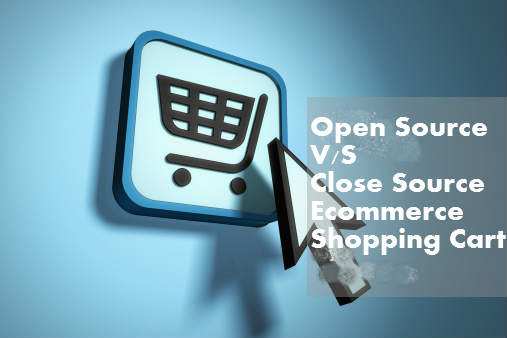
They all have their positive and negative sides. Open source platforms usually attract lots of community help and develop many more functions and integrations with other platforms then commercial ones. However commercial ones usually give you better paid support and confidence. Three of the top open source CMSs for successfully managing ecommerce sites are: Magento, osCommerce and Zen Cart.
Security
However, because of the popularity of open source systems, many people are familiar with open source code, which creates a higher risk for hacking. You should look for quality, security and features, it should not matter if they are open source or not. Whether a platform is targeted by hackers is typically related to how popular that platform is, rather than whether or not it is open source. It generally comes down to how much of an emphasis the developer places in ensuring the product is secure. Deployment and maintenance can also be factors.
With an open source platform that you install, develop and maintain yourself, you have greater flexibility, being able to customize the application as needed for your site. However, you have to constantly monitor the provider’s web site for security news, and manually update the software
every time a security patch is released. You must also ensure the security and integrity of the backend databases, and other resources on the server, as well as monitor the system for attacks.
Service & Support
Closed source software usually equates to better security and support. For an ecommerce site, it isn’t necessarily more secure to go with a closed source system, but unlike open source systems, developers don’t have to spend as much time securing code. If a developer runs into any issues in a closed source software, providers are more than happy to offer you support. This is a convenience, because it cuts down on the development time and cost.
Scalability
With a hosted or managed solution, you lose some of the flexibility. All of the customization options are provided at the discretion of the provider. However, updating the software and securing the servers falls to the developer, not to you. On the downside, you have no way of knowing how much the provider will stay on top of the security of the services.
Cost / Pricing
Unfortunately with closed source, the barrier to entry is a lot higher. A smaller community means less experience and collective knowledge. This usually equates with much higher costs across the board. You often have to pay for the software or service, and if your support package doesn’t include it, you end up having to pay someone else for their expertise.
In House Infrastructure
In the end, it all boils down to the abilities of your in-house tech staff and your budget. Many enterprise companies design with open source because they have qualified developers. If you don’t feel that your team is ready to take on extra challenges, then closed source (and its built-in support) may be the best route. Although closed source companies will offer support , they may not always offer you programming support. For instance, they may outsource a job for you. The very best design work is created with confidence, so be sure you’re working with a CMS that you feel secure in.
